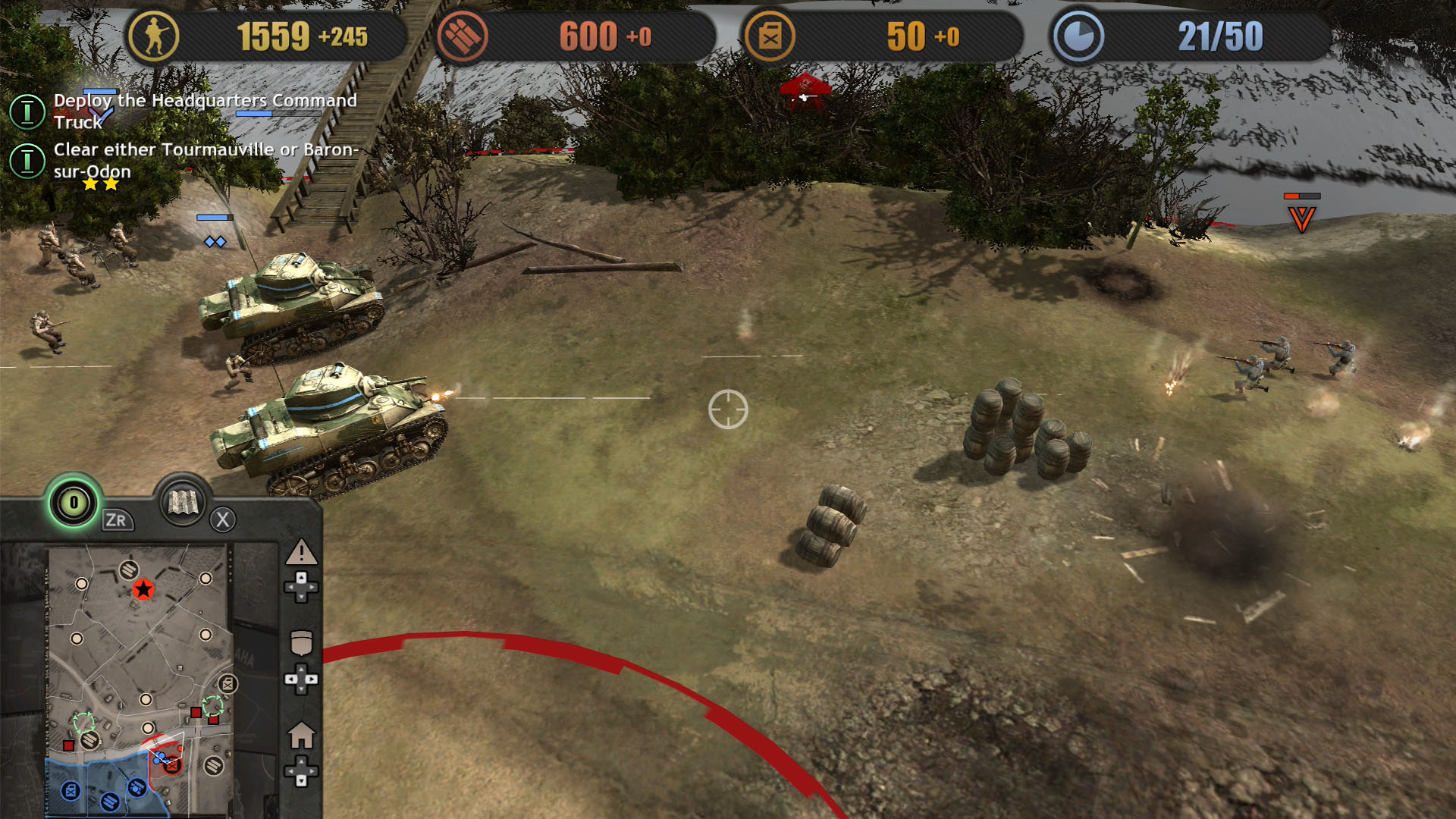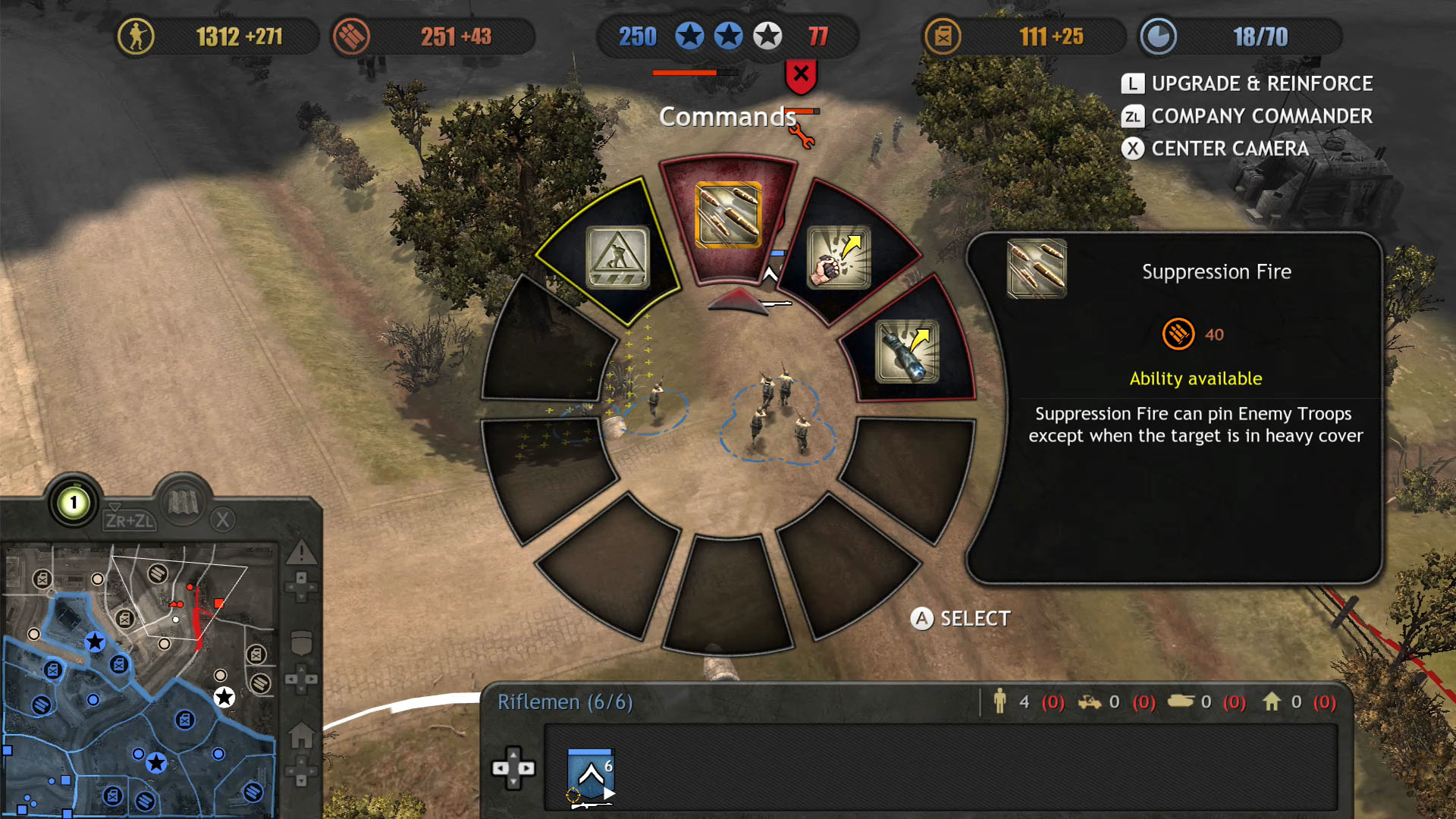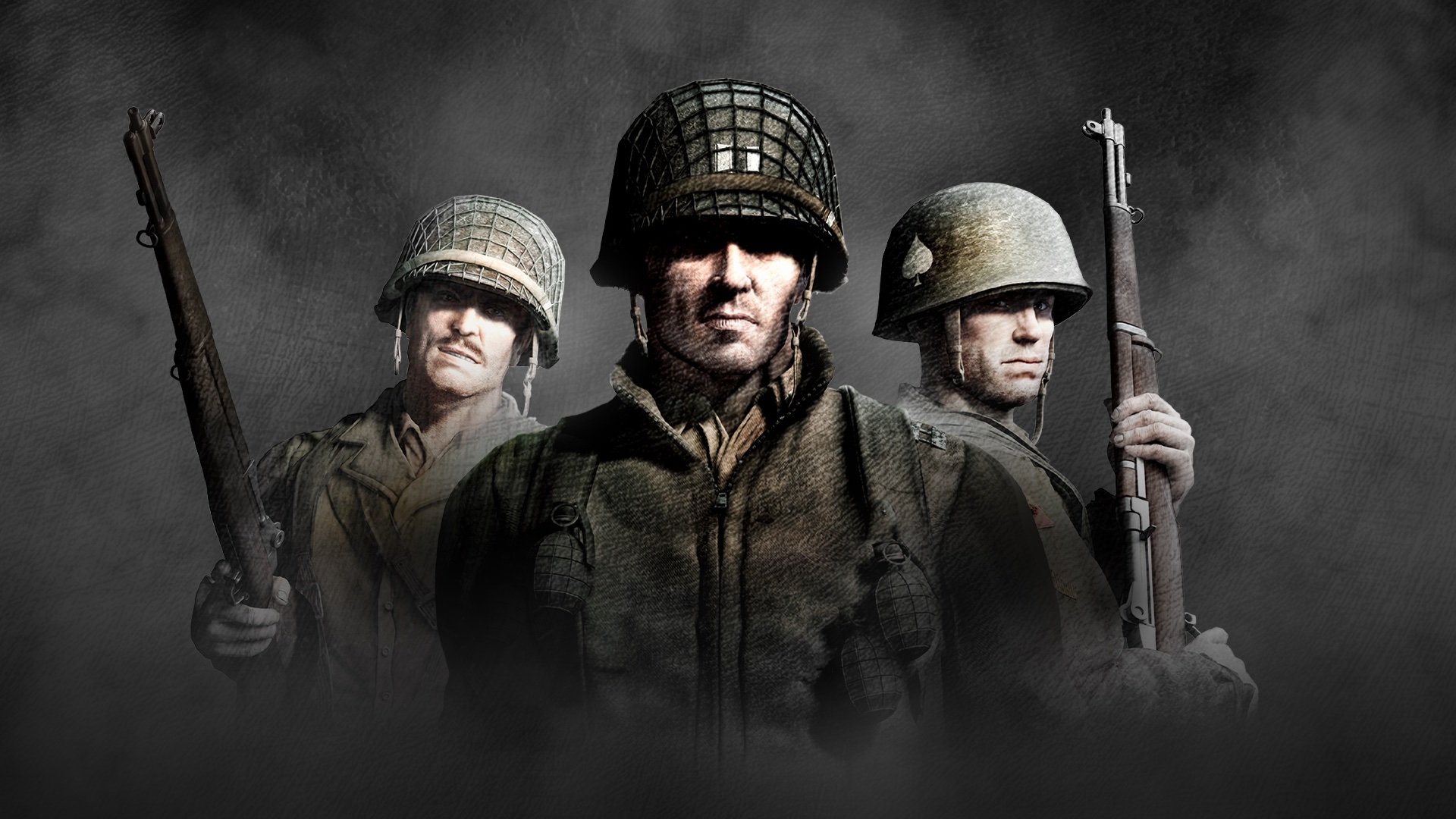Another Feral Interactive interview in the same year? Could it be? Well, yes. Feral Interactive keeps bringing out more quality releases across platforms we cover, and I’m always up to talk porting, hardware, and more. While I spoke to Feral Interactive about Sid Meier’s Railroads, I’ve been wanting to also talk to the publisher and developer about its Nintendo Switch releases. With Company of Heroes coming to Switch as the Company of Heroes Collection, I knew it was the right time for a new interview. This one will focus on the Switch, optimizing a game built for keyboard and mouse for a controller on Nintendo Switch, game tutorials, and more.
TouchArcade (TA): It has been a few months since I interviewed you, and we’ve seen some interesting hints and announcements leading up to this new launch. While the last interview was for a mobile launch, we are now focusing on Nintendo Switch. Could you share your knowledge on the Nintendo Switch hardware and how it compares to mobile devices?
Feral Interactive (FI): The Nintendo Switch is a dedicated games console, so all its power is reserved for playing games. Mobile operating systems are designed for all sorts of tasks, making for compromises in the gaming department.
That said, the Switch hardware is now getting a little long in the tooth. It’s based on a 2015 Nvidia chip, customized with lower CPU and GPU speeds to extend battery life.
The Switch CPU, in particular, is not as powerful as that found in most modern mobile devices, so a lot of time is spent ensuring a balance of resources between all 3 CPU cores and the GPU for the best overall performance. This sounds simple, but can take significant engineering before performance meets release standards.
TA: With Alien: Isolation, we saw a game you released on Switch come to mobile, but Company of Heroes is the other way around. How has it been working on the codebase going from mobile to Switch?
FI: GRID Autosport was released on mobile before Switch, so we have done it both ways round — the only thing left to do is both platforms at the same time!
When going from mobile to Switch, the main focus areas are interface and optimization. The Switch needs a gamepad-centric interface (as opposed to touch, which is the focus on mobile). We alluded above to the challenge of getting games performant on Switch: a lot of time is spent optimizing games to make sure they perform well — and perform consistently.
In moving from Switch to mobile, a lot of the performance optimization will already have been done. This is a great foundation to build on, and that often facilitates better performance on the most powerful, top-end devices. It also allows more focus on things like additional input methods (touch, keyboard & mouse), and redesigning the user experience (UX) dynamically to adapt to various screen sizes.
There’s no one preferred route. Both have their challenges. While there is more power to work with on mobile, there is also a huge variety of devices. Optimizing for and testing hundreds of different phones and tablets takes a lot of time: they all have different screen sizes, chipsets, RAM, operating system versions, driver versions, etc. On Switch, the optimization challenges are tougher, but that can be offset by developing for a single device — the limitations of which are well understood.

TA: You already confirmed to me that there are no plans to bring controller support to mobile for Company of Heroes, but I’m curious about the challenges involved in translating a game like this from touch or keyboard & mouse to a controller for Switch.
FI: This is an evolution of our mobile work. Over the last few years, we have learned a lot about how to adapt games’ control mechanisms while retaining the feel of the gameplay.
With Company of Heroes, the UX and controls had already been reworked for touchscreens, so we were familiar with the challenges… The biggest one for a gamepad is to group controls and actions so they flow naturally. This requires a lot of iteration of the control mapping. For Company of Heroes, there are many different command actions, but, whether the player is using a Commander Ability, issuing a unit command, or building, the inputs and steps must be consistent and feel “right.”
It is relatively easy to come up with a mapping that works for 8 out of 10 commands. The real test is ensuring the final 2 maintain that coherent feel.
So, significant effort goes into iterating on the control system for consistency, ensuring similar actions follow similar flows of button presses. Adding or moving a single command can have knock-on effects that flow across the entire controller mapping, so you need to review the impact of a change on the entire experience.
Finally, when it comes to controls in RTS games, players have different preferences for how certain features should work. After extensive testing and iteration, options were added to allow players of all skill levels to customize their experience. For example, the game can automatically deselect units after issuing a construction order, auto-open the building wheel when a base structure is selected, and invert unit facing when issuing a command. These and similar additions all help to make it feel like the game fits the player, rather than demand that the player conforms to its demands.
We also needed to update all the UX elements to work with a controller, but I think we’ve gone into enough detail already!

TA: Was there any input or reference taken from the team doing Company of Heroes 3 for PS5 and Xbox Series X in bringing over Company of Heroes to Nintendo Switch for its interface and controls?
FI: We have worked with Relic [Entertainment] for well over a decade, and have a great relationship. We discuss concepts with them on all our Relic projects, including Company of Heroes for Switch. But, while the fundamentals of Company of Heroes and Company of Heroes 3 are similar, there are a lot of gameplay differences between the two, and that limits the potential for close collaboration.
TA: What led to choosing Company of Heroes over something like ROME: Total War for Feral Interactive’s first PC-focused game coming to Nintendo Switch?
FI: As a company, Feral has tried to stage its development one platform at a time — sequenced to allow us to gain the knowledge that provides a sound basis for tackling the next platform.
ROME: Total War on iPad was the first mobile release, and an ideal starting point because, for a mobile device, it has a relatively large screen and a limited number of form factors.
Once the iPad version was released and well received, we started developing an iPhone version, redesigning and optimizing the interface to display large amounts of complex information on a smaller screen.
We then moved on to Android, which has a much wider variety of hardware than iOS, so poses more technical and QA challenges than it does design.
The decision to bring Company of Heroes rather than ROME: Total War is predicated on the differences in their gameplay. The former is an RTS game with various campaigns, all played out inside a real-time 3D environment. The Total War series has that same RTS element, alongside a turn-based strategy component, with many screens of detailed text and statistics. That presents a significant additional obstacle to what is already a challenging design and development task.
So, before anything else, let’s see how the Company of Heroes Collection is received on Switch!

TA: You mentioned there were some plans for looking into a physical release, and I’m curious whether this is something you will discuss in the near future?
FI: We know that there are plenty of Switch gamers who would like a physical copy, however, Company of Heroes will be a digital-only release at launch. The economics are such that it is hard to make them work for physical releases, and, while there are physical versions of a couple of our Switch releases on the way, there are no firm plans for Company of Heroes.
TA: What should players expect in terms of resolution and frame rate in docked and handheld modes?
The aim is a consistent 30fps at native resolution (1080p docked and 720p undocked), and anti-aliasing is used to sharpen the 3D elements. It took a lot of engineering to get every drop of performance from the Switch by parallelising tasks over the CPU cores and the GPU.
TA: Will the Switch version have the mobile touch support interface when played in handheld mode?
FI: Although there are touch controls on mobile, they are not the best fit for the Switch, which is controlled using Joy-Cons in both handheld and docked modes.
There are a couple of reasons for this: the entire game’s UX and controls have been designed to use Joy-Cons. Implementing a touch interface solely for the handheld experience is hard to justify, and we preferred to focus our efforts on Joy-Con support.
Also, holding a Switch to use touch controls similar to Company of Heroes on mobile is physically uncomfortable!

TA: Are you utilizing HD Rumble in the Company of Heroes Collection on Switch??
FI: No, there are no areas in the game which lend themselves to that feature.
TA: A bit offtopic, this announcement got me thinking about how Feral Interactive did Dawn of War II for macOS and Linux, but not the original game. Are there plans to bring Dawn of War to mobile or Switch?
FI: That is a great suggestion. We’ll take it under advisement.
TA: I adore Company of Heroes on iPad, and I’m hoping it serves as a great entry point into the genre for Switch owners who have not sampled it yet. Feral Interactive’s tutorials are amazing. Will you be doing similar videos for the Switch version of Company of Heroes?
FI: Glad you appreciate the online tutorials. A lot of thought and effort goes into them because we want people to get the best from the games we release.
The Switch lacks a web browser for accessing YouTube, so help has to be delivered differently.
Instead, dynamic prompts illustrate and expose controls to the player in-game. Control prompts are also smaller and easier to list than describing a gesture, which makes them ideal for Switch.
There are also additional controller layout visuals in the pause menus and updated in-game tutorials to round out the Help.

TA: Company of Heroes on Switch is releasing as Company of Heroes Collection with all DLC, but multiplayer isn’t being included at launch. Is there anything else coming later on with patches in terms of optimization or additional features barring multiplayer?
FI: Apart from online multiplayer, there are no planned post-release updates. Our aim is to deliver a polished and complete game from the outset. We’re old-fashioned like that!
TA: Has there been any progress for Company of Heroes multiplayer on mobile? Will it have cross play with Switch?
FI: Work on cross-platform multiplayer between mobile and Switch has been underway for some time. The plan is to start with a multiplayer beta on Android in early 2024, then follow that with iOS and Switch multiplayer updates later in the year.
TA: Since Feral Interactive is handling the new Switch and prior mobile versions of Company of Heroes, are there plans for cross progression / save?
FI: Supporting cross-platform multiplayer is in the works, but cross-platform save games for the single player is not. Each platform uses a distinct save game system, and they are technically incompatible for a number of reasons.
TA: So far, Feral Interactive has been focusing on Switch on the console side. Are there plans to bring any of your titles to PS5 and Xbox in the future?
FI: There have been a number of requests… There are no immediate plans, but “message received!”

TA: What are your thoughts on the current state of mobile and console gaming for premium games?
FI: Game development never stands still. So, while mobiles are getting more powerful, the specifications for AAA games are increasing — which makes for a continually moving target.
With Apple’s latest A17 chip adding even more GPU performance, and Qualcomm soon to release their latest chipset for Android devices, the possibilities keep on expanding.
Another challenge is install size. Mobile app stores have an initial install limit of either 2GB or 4GB, depending on the deployment method. With AAA games often 10 to 20 times larger than this, it’s sometimes impossible, however good the compression techniques, to get all of a game’s content within those limits. That means players are often required to download further data after the initial download of a 4GB app, which is not a great user experience. Better support for large applications on mobile app stores is very much on the wanted list!
In regard to console: our focus is on Nintendo Switch. We are excited to be bringing great games to the platform, and are thrilled with the reception they have had. Of course, most of us here at Feral are gamers, and we play a lot of the big releases outside our target platforms. 2023 has been a great year for games, and we’re looking forward to what 2024 brings on both the software and hardware side!
We’d like to thank everyone at Feral Interactive for their time here.